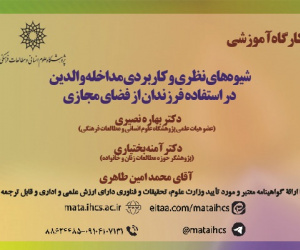رد پای سطوح طبقه بندی نظریه سولو در کتاب ریاضی پایه هشتم (مقاله علمی وزارت علوم)
درجه علمی: نشریه علمی (وزارت علوم)
آرشیو
چکیده
هدف پژوهش حاضر بررسی محتوای کتاب ریاضی پایه هشتم براساس نظریه سولو است. پژوهش از نوع توصیفی- تحلیلی و با روش تحلیل محتوا انجام گرفته است. جامعه آماری، تمامی مسائل کتاب ریاضی پایه هشتم بود و نمونه با جامعه برابر در نظر گرفته شد. ابزار پژوهش، فرم های تحلیل محتوایی بود که روایی صوری و محتوایی آن به تأیید اساتید آموزش ریاضی و معلمان باتجربه رسید و پایایی ابزار نیز به کمک فرمول هولستی86/0 تعیین گردید. روش تجزیه و تحلیل داده ها با استفاده از آمار توصیفی انجام شد. نتایج نشان داد که حدود 29 درصد مسائل کتاب ریاضی پایه هشتم به سطح تک ساختاری، حدود 38 درصد به سطح چندساختاری، حدود 31 درصد به سطح رابطه ای و حدود 2 درصد به سطح انتزاع تعمیم یافته سولو اختصاص یافته است. طبق نتایج، فصل پنجم دارای بیش ترین مسائل در سطح تک ساختاری، فصل دوم دارای بیش ترین مسائل در سطح چندساختاری و فصل سوم دارای بیش ترین مسائل در سطح رابطه ای هستند. همچنین، فصل نهم دارای بیش ترین مسائل در سطح انتزاع تعمیم یافته است و فصل های اول، دوم، پنجم، هفتم و هشتم هیچ مسئله ای در سطح انتزاع تعمیم یافته ندارند. نتایج این پژوهش می تواند به سیاست گذاران آموزشی و مولفان و برنامه ریزان کتب درسی، کمک نماید تا به بهبود کتاب درسی براساس سطوح شناختی دانش آموزان بپردازند.The traces of the SOLO Theory taxonomy levels of in the 8th grade mathematics textbook
The purpose of this study is to examine the content of the eighth grade math textbook based on SOLO theory. The study method was descriptive-analytical by content analysis. The statistical population included all problems of the eighth grade math textbook and the sample is equal to the population. The research instrument is content analysis forms whose face and content validity has been approved by experienced mathematics teachers and instructors and the reliability has been determined using the Holsti formula 0.86. Data analysis method was performed using descriptive statistics. The results showed that about 29% of the book problems are dedicated to the unistructural level, about 38% to the multistructural level, about 31% to the relational level and about 2% to the extended abstract level. According to the results, the fifth chapter has the most problems at the unistructural level, the second chapter has the most problems at the multistructural level, and the third chapter has the most problems at the relational level. Also, the ninth chapter has the most problems at the extended abstract level, and on the other hand the first, second, fifth, seventh and eighth chapters do not have any problems at the extended abstract level.











